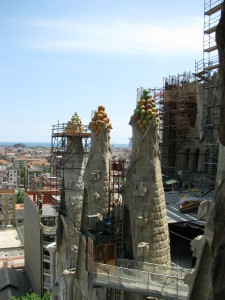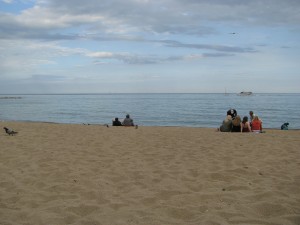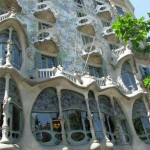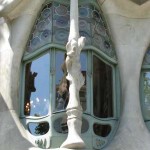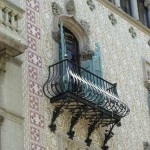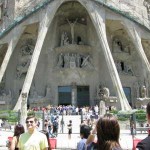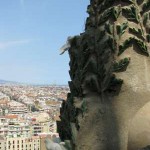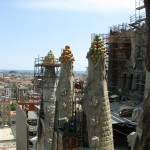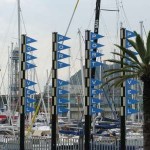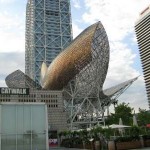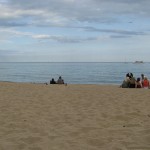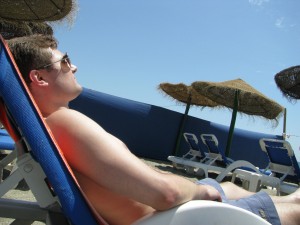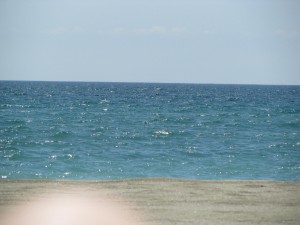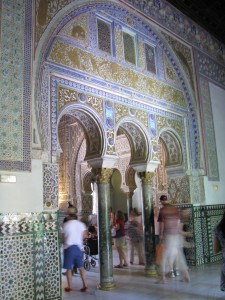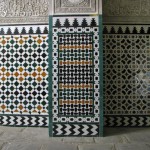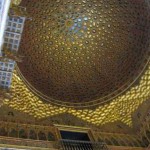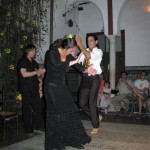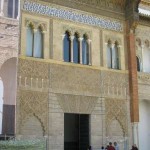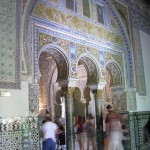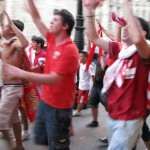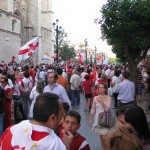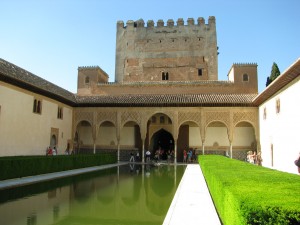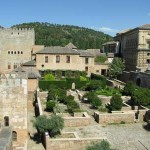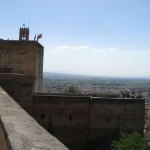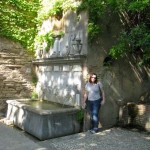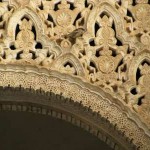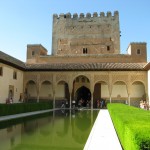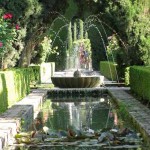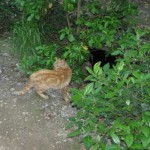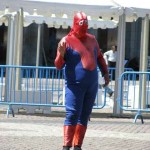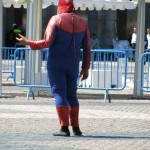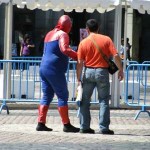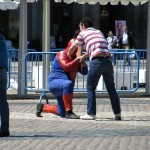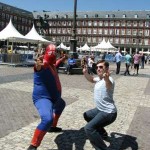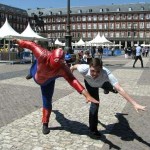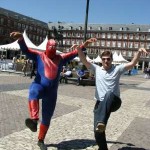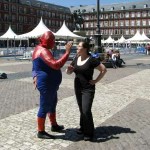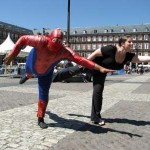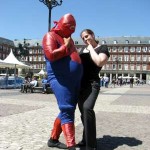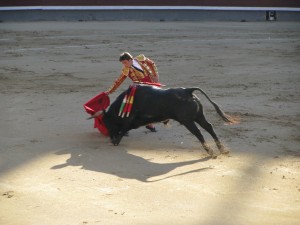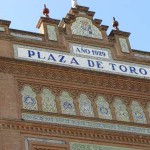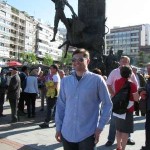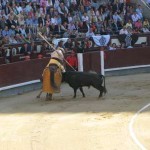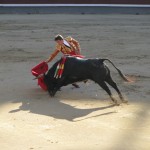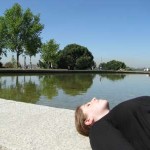Now that we have been to all the cities we will visit in Spain, I can say that Barcelona is my favorite. The reasons why I like it are not at all consistent with the what the guidebooks would have you believe, however.
We certainly took the guidebooks’ advice and saw the Gaudi highlights at Sagrada Familia, La Pedrera, and La Manzana de Miseracordia (please forgive my Catalan spelling, it is probably wrong). When I saw Gaudi’s work, particularly juxtaposed with his (more traditional) contemporaries on the Manzana de Miseracordia, I couldn’t help but think that someone found the greatest sandcastle builder on the Barcelona beach and put him in charge of everything.
Gaudi’s style aside, Sagrada Familia was a fantastic tour. For starters, how many of the world’s great cathedrals are still under construction? Also, how many are as varied and grandiose as this one? Answer to both? Not many.
Now as I mentioned, the style employed by Gaudi is certainly not my cup of tea. Gaudi’s style is dominated by natural lines and a virtual lack of corners; I prefer my lines cleaner and more modern. Must be my German side.
Even though I don’t favor Gaudi’s choices, I admire his concepts and execution. The inside of Sagrada Familia really looks like a forest. The exteriors are grandiose and fitting with the theme. The cumulative effect is one that manages to inspire both awe and relaxed contemplation, which is no mean feat.
If you decide to visit Sagrada Familia, you will have the opportunity to ride an elevator to the top (both in front and in back) to get a better view of the city. I can’t vouch for the front elevator (other than to say the line was quite long), but the back elevator was terrifying. I am not particularly prone to vertigo, but there is something deeply unnerving about being up 300 feet in a narrow stone spiral staircase. There were opportunities to go out on small balconies and look up at the details of the cathedral’s frescoes, but I could only muster a few quick photos away from the edge of the balcony. Karen was about twice as terrified as I was, which is to say she was just short of flipping out. We made our was down (and down, and down, since the elevator only carries you up), and we were both happy to be back on terra firma.
Leaving Gaudi’s Barcelona, we ran into the less celebrated parts of Barcelona, and these were the parts which I really enjoyed. These include: La Rambla, the Picasso Museum, the beach in Barceloneta, and Port Olympic.
La Rambla is a touristy, Times Square-esque strip that runs for about a mile. The street lined with stores (mostly restaurants and bars) and the large median is full of vendors and street performers. Alas, Fat Spiderman was nowhere to be found. The concentration of people made La Rambla worthwhile on its own, but it also served to take us from our hotel (at the top) to the waterfront, where Barceloneta and Port Olympic are.
Barceloneta reminded us a lot of Miami, with a large sandy beach inside a major city. Even on a cloudy day, it was very satisfying to walk from a hotel downtown to the beach. There was also a lot of nice restaurents and clubs along the beach and at Port Olympic, which we would have gone back to at night if not for the terrible inertia of the hotel room.
The last bit of Barcelona that we sampled was the Picasso museum. The museum had a pretty interesting exhibit, comparing Picasso’s work to that of Rusiñol, and tracing Rusiñol’s influence on Picasso’s early career. The museum and its collection of Picasso’s work was not overly impressive, with the exception of its treatment of Picasso’s take on Velasquez’s Las Meninas. That part was super interesting, I am glad we went to see Las Meninas at the Prado beforehand. Even Karen was impressed with this exhibit.
Between the museum, La Rambla, and the beach, Barcelona felt to us like a mixture of New York and Miami. We enjoyed the proximity of everything, and being able to walk from Times Square to Miami beach is pretty cool. Gaudi’s sandcastles were the icing on the cake, but to us the cake was sweet enough to stand on its own.
- More Gaudi at Casa Batlló
- Gaudi’s window at Casa Batlló
- Josep Puig i Cadafalch’s window next to Gaudi’s
- I wore my octopus shirt in Gaudi’s honor
- What better place for our enchanted undersea Pentecost?!
- Where’s Waldo?
- The back doesn’t really match the front
- The supports do indeed look like trees
- We were quite high up
- Pretty good shot, considering I had my eyes closed
- Somewhere, a Moorish king weeps at the beauty of all these fountains
- I has a blowhole
- Boats moored in the city (I have now used all forms of the word “moor”)
- This is a giant, bronze-colored chip-fish (crisp-fish for my non-existent British readers)
- My wife’s beach photography has improved

